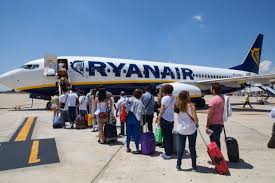United Airlines stands at the forefront of a dual distinction, being the top producer of carbon emissions among U.S. passenger airlines last year while also sourcing the most low-emission sustainable aviation fuel (SAF). The Chicago-based carrier reported 30.4 million metric tons of scope 1 emissions in 2022, which notably excludes emissions from its regional affiliates. Nonetheless, it outperformed in sourcing SAF, displaying a significant commitment to reducing carbon footprint.
United’s Chief Sustainability Officer, Lauren Riley, acknowledged the progress but emphasized the long road ahead to achieve the airline’s 2050 commitment of eliminating 100% of greenhouse gas emissions without relying on traditional carbon offsets.
The biggest carbon emitters after United were American, Delta, Southwest, JetBlue, and Alaska Airlines. As the industry recovered from the pandemic, U.S. airline emissions increased across the board, while airlines focused more than ever on their carbon emission reduction goals. Sustainable aviation fuels became a prominent talking point, with numerous headline-grabbing deals and investments aimed at achieving net-zero carbon emissions by the mid-century.
SAFs, known for their significantly lower lifecycle emissions compared to traditional jet fuel, are seen as the key to driving the desired reduction in emissions. However, the current production of SAFs remains far from sufficient to meet global airline fuel needs.
United Airlines topped the list of SAF users in the U.S., securing three million gallons of the fuels in 2022, a triple increase from the previous year. American, Delta, JetBlue, and Alaska followed suit, contributing to the industry’s SAF adoption efforts.
Both the European Union and the U.S. government have enacted policies to stimulate the SAF industry, with different approaches. The EU implements mandates requiring airlines to use SAF for a percentage of their fuel needs in the bloc. Meanwhile, the U.S. has provided tax incentives for SAF producers.
Despite these positive developments, the aviation industry remains divided over scaling SAF production, with some believing that airlines need to take a more proactive role in stimulating the market alongside government efforts.
United Airlines’ efforts to source more SAF and reduce carbon emissions signify a step in the right direction, but the entire industry faces significant challenges in scaling SAF production to meet the growing global demand. The journey towards a sustainable and greener aviation future continues, with collaboration between airlines and governments playing a crucial role in realizing the vision of net-zero carbon emissions.

















More Stories
Thailand and Wego Partner to Elevate Tourism for MENA Travelers
Duetto’s Strategic Acquisition of HotStats
Rethinking Tourism Strategies: Addressing Overtourism Challenges